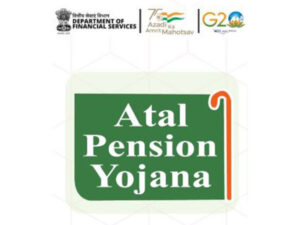Prepared to raise interest rates further if appropriate: Federal Reserve Chair on US efforts to tackle inflation
Washington [US], August 26 (ANI): Chair of the United States Federal Reserve, Jerome H Powell said that his central bank would continue its efforts to combat high inflation and that officials are prepared to raise interest rates further if needed.
At the Federal Reserve Bank of Kansas City’s annual Jackson Hole conference in Wyoming, Powell addressing the “Structural Shifts in the Global Economy” symposium provided an update on the central bank’s efforts to combat high inflation and outlined the outlook and uncertainties that lie ahead.
He acknowledged the emergence of high inflation as a result of strong demand and pandemic-related supply constraints.
“Although inflation has moved down from its peak—a welcome development—it remains too high,” Powell said.
“We are prepared to raise rates further if appropriate, and intend to hold policy at a restrictive level until we are confident that inflation is moving sustainably down toward our objective,” the Federal Reserve Chair said.
He noted that the Federal Reserve had already raised policy rates significantly over the past year, with the expectation that these moves would help slow the growth of aggregate demand, giving supply time to catch up.
However, he emphasized that even though inflation had started to come down from its peak, it remained too high.
The key interest rate has been increased to a 22-year high by policymakers in an effort to limit growth and lower inflation to their 2 per cent objective. Consumer inflation is currently 3.2 per cent, down from its peak of 9.1 per cent last year.
Home sales have fallen as a result of mortgage rates rising beyond 7 per cent to their highest levels in two decades.
Chair Powell discussed two key inflation metrics, headline Personal Consumption Expenditures (PCE) inflation and core PCE inflation, which excludes food and energy prices.
Headline PCE inflation, experienced directly by households and businesses, had reached 7 per cent in June 2022 but had decreased to 3.3 per cent by July 2023.
However, Powell stressed that food and energy prices, influenced by global factors, could be volatile and not fully indicative of future inflation trends.
Core PCE inflation, which had peaked at 5.4 per cent in February 2022, gradually declined to 4.3 per cent in July 2023. While the recent lower readings were encouraging, Powell cautioned that these data points were only the beginning of the effort to achieve sustained progress in lowering inflation.
Core goods inflation had fallen, especially for durable goods, due to tighter monetary policy and supply and demand corrections. For example, the motor vehicle sector saw a decline in inflation as supply improved and higher interest rates impacted demand.
Chair Powell emphasized that while the decline in inflation was a positive development, the Federal Reserve would continue to play a pivotal role in the process.
He noted that the unwinding of pandemic-related distortions would continue to exert downward pressure on inflation, but the restrictive monetary policy would increasingly become important in achieving the 2 per cent inflation target.
Regarding economic growth, Powell mentioned that restrictive monetary policy had tightened financial conditions, indicating below-trend growth.
However, he highlighted that economic growth had come in above expectations, with robust consumer spending and signs of recovery in the housing sector.
This mix of data suggested that while monetary policy was already restrictive, further progress on inflation could be at risk if the economy continued to outperform.
In the labour market, Powell noted that rebalancing continued, with improvements in labour supply and easing wage pressures.
Labour supply improved due to a stronger participation among workers aged 25 to 54 and increased immigration.
While job openings remained high, they were trending lower and payroll job growth had slowed. Wage growth had been slowing, but the real wage growth was increasing as inflation fell.
Powell concluded his address by discussing the challenges and uncertainties faced by the Federal Reserve in managing monetary policy.
He highlighted uncertainties about neutral rate of interest, the duration of policy lags, and the unique supply and demand disruptions of this cycle. These factors made it challenging to precisely identify the level of monetary policy restraint required.
He emphasized that risk management considerations were crucial in navigating these uncertainties. The Federal Reserve’s goal remained to restore price stability and they would continue to assess progress based on evolving data and risks.
Powell reaffirmed their commitment to achieving the 2 per cent inflation target and to maintaining a stance of monetary policy that effectively addresses both sides of their dual mandate.
In conclusion, Powell stated that the Federal Reserve would keep working toward the goal of achieving price stability, even as they navigated through a cloud of uncertainties and challenges in the current economic environment.






